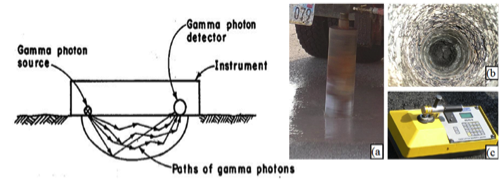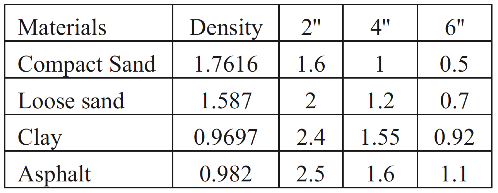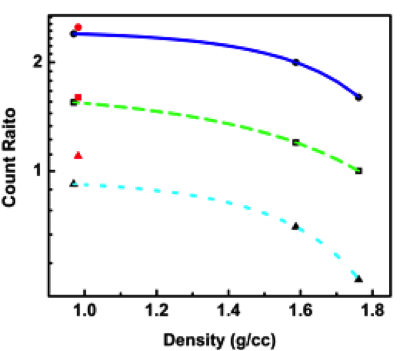| |
Title |
| |
|
Characterization and Modeling of Photon Absorption in Asphalt Material for Improved Accuracy and Consistency of Nuclear Density Measurement
|
| |
| |
Participants |
| |
|
- Huiming Yin
- Qian Wang
- Hoe I. Ling
- Wen. Zheng. Feng
- Mingzheng Chen
- Gisele G. Ribeiro (Ph.D. student)
|
| |
Project Quad |
| |
|

|
| |
| |
Summary |
| |
|
Although the nuclear method has been widely used in the compaction measurement of both soils and asphalt pavements, its accuracy for asphalt pavements is not as good as that for soils. Due to this issue, many disputes have incurred in construction projects, which resulted in replacement of the nuclear test method with the core sample method in many state DOTs for quality assurance or acceptance including the Region II states, although most contractors still use it on quality control as a fast and economic test method.
|
| |
|
Our previous investigation disclosed that the above disputes can mainly attribute to the effect of asphalt’s chemical constitution on the nuclear gauge count readings. There are three basic types of photon interaction with matter, i.e., the Compton, photoelectric, and pair production effects. The first two effects are dominant in the existing nuclear test methods. Attenuation from the Compton effect is proportional to physical density; however attenuation from the photoelectric effect depends on atomic number or composition. Therefore, to accurately measure material density, the relative composition effect needs to be corrected. In other words, the Compton and photoelectric effects need to be decoupled.
|
| |
|
The goal of this project is to improve the accuracy and consistency of the nuclear test methods in asphalt pavement construction. To this end, we will first investigate the energy absorption difference between asphalt and aggregate materials. Experiments will be conducted to test the energy absorption rates of asphalt binders, mixtures, and soil materials using different nuclear sources. The nuclear gauge count reading changing with asphalt material density and microstructure will be characterized and modeled. The correlation between actual block densities and nuclear gauge count readings will be analyzed and understood, and photon absorption will be simulated through particle transmission analysis, and an appropriate calibration equation will be developed.
|
| |
|
Because the major improvements are through the fundamental testing principles, the main changes are conducted through the calibration method and count reading analysis. The improved test method will be economically feasible and easy to use as the existing nuclear test method. Upon the success of this project, the revisions of the hardware will be validated and implemented through our industry collaborator – Troxler Electronic Laboratories, Inc., and then will be used in some pilot projects for demonstration and evaluation. The developed technology together with the new hardware will be released and produce national and international impact on asphalt pavement construction.
|
| |
| |
Method |
| |
|
- Literature Review
- Investigation of the energy absorption difference between asphalt and aggregate Provide accelerated aging and testing loads
- Fabrication of asphalt blocks
- Simulation and validation of the photon absorption
|
| |
| |
Results |
| |
|
- The photon absorption difference through pavement materials is studied.
|



